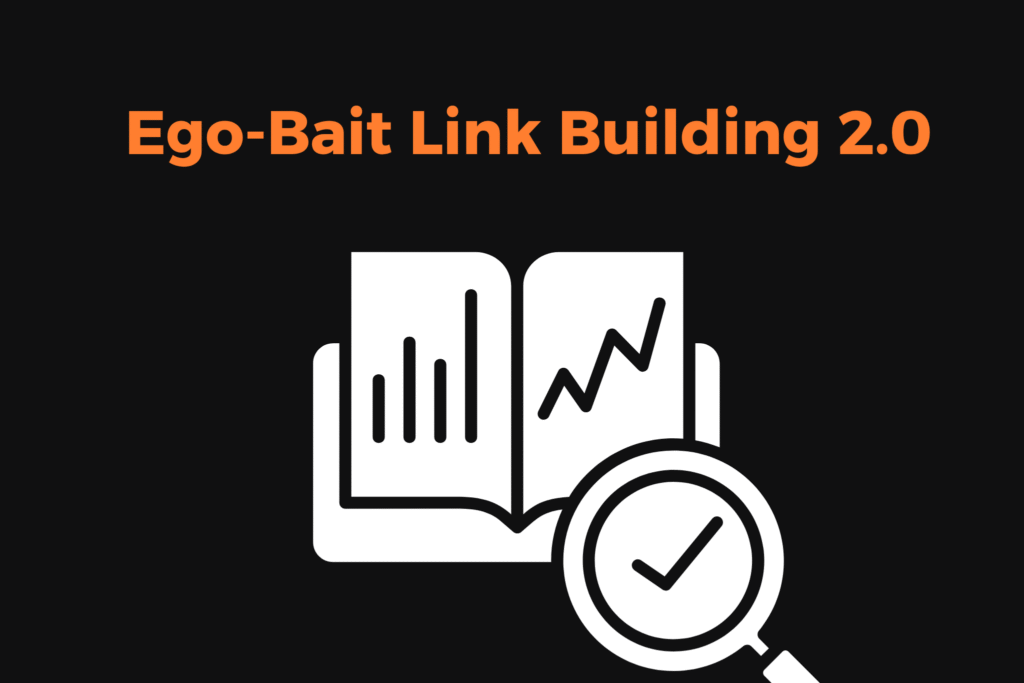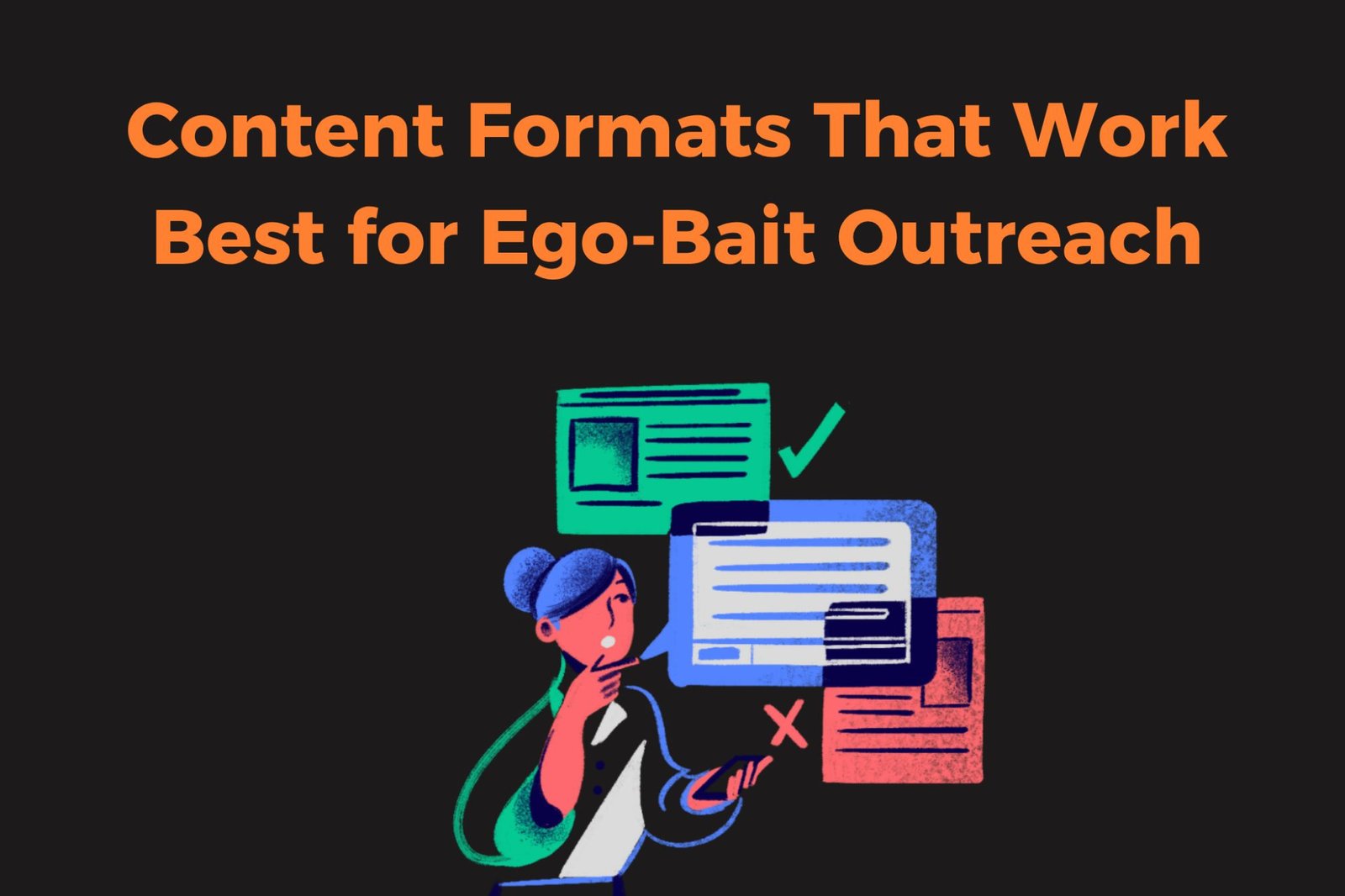
In the competitive landscape of digital marketing, standing out requires more than just traditional strategies. Enter Ego-Bait Link Building 2.0: Featuring Competitors Strategically. This innovative approach not only leverages the power of recognition but also strategically incorporates competitors to enhance your SEO efforts. By understanding the nuances of ego-bait link building, you can create content that compels others to link back to you, boosting your online presence. This blog will delve into the fundamentals of ego-bait, explore effective content formats, and provide insights on tracking and scaling your efforts. We’ll also discuss common pitfalls to avoid, craft the perfect outreach message, and identify the best content formats for successful ego-bait outreach. Additionally, learn how to choose the right competitors to feature and shift from mere flattery to strategic positioning. Discover how to transform your link-building strategy with Ego-Bait 2.0 and gain a competitive edge in the digital realm.
What Is Ego-Bait Link Building (and Why It Still Works)?
Definition and Basic Concept of Ego Bait
Ego-bait link building is a strategic approach in SEO where you create content that highlights or features individuals, brands, or companies in a positive light. The goal is to appeal to their ego, encouraging them to share your content and link back to your site. This method leverages the natural human desire for recognition and appreciation, making it a powerful tool for acquiring backlinks.
Why People Link When They’re Featured
When someone is featured in content, it taps into their sense of pride and accomplishment. Here’s why they’re likely to link back:
- Recognition: Being acknowledged boosts their reputation and credibility.
- Social Proof: Sharing the feature acts as a form of endorsement, enhancing their authority.
- Networking: It opens doors for further collaboration and relationship building.
Examples of Ego-Bait Content Formats
There are several effective formats for ego-bait content that can help you build backlinks:
- Roundups: Compile expert opinions or insights on a specific topic, showcasing various contributors.
- Awards: Create awards recognizing top performers or influencers in your industry.
- Lists: Feature lists such as “Top 10 Influencers” or “Best Blogs” to highlight key figures.
By strategically using ego-bait SEO techniques, you can enhance your link-building efforts and improve your site’s authority. Remember, the key is to genuinely appreciate and recognize the contributions of those you feature, fostering a positive and mutually beneficial relationship.
Ego-Bait 2.0: Shifting from Flattery to Strategic Positioning
In the ever-evolving world of SEO, the concept of ego-bait has transformed. Gone are the days when simple name drops sufficed. Today, we delve into Ego-Bait 2.0, where strategic positioning takes center stage. Let’s explore how modern SEO goes beyond mere flattery and how you can feature competitors and peers without losing your authority.
How Modern SEO Goes Beyond Simple Name Drops
SEO has matured, and so have the strategies we employ. It’s no longer just about mentioning a name; it’s about creating meaningful connections. By strategically positioning your content, you can build relationships that are mutually beneficial. Here’s how:
- Identify key players in your industry who align with your brand values.
- Create content that highlights their expertise while subtly showcasing your own.
- Engage with them on social media to foster genuine relationships.
Featuring Competitors and Peers Without Losing Authority
Featuring competitors might seem counterintuitive, but it can actually enhance your authority. By acknowledging their strengths, you position yourself as a knowledgeable and confident player in the field. Here’s how you can do it effectively:
- Highlight areas where your competitors excel and offer your unique perspective.
- Collaborate on projects that benefit both parties, showcasing a spirit of cooperation.
- Use competitor insights to inform your own strategies, demonstrating adaptability and growth.
The Psychology of Perceived Authority and Collaboration
Understanding the psychology behind perceived authority can elevate your SEO game. When you collaborate with others, you tap into a network of trust and expertise. Here’s why this matters:
- Collaboration signals confidence and openness, traits that audiences value.
- By associating with respected peers, you enhance your own credibility.
- Shared audiences mean increased visibility and potential for growth.
In conclusion, Ego-Bait 2.0 is about more than just flattery. It’s about strategic link building and advanced ego bait that leverages SEO competitor collaboration. By embracing this approach, you not only build authority but also foster a community of trust and expertise. So, are you ready to shift your strategy and embrace the future of SEO?
Choosing the Right Competitors and Industry Peers to Feature
When it comes to ego-bait link building, selecting the right competitors and industry peers to feature is crucial. Not only does it enhance your SEO strategy, but it also builds valuable relationships. Let’s dive into the metrics and tools that can help you make informed decisions.
Metrics to Consider
To ensure you’re choosing the best competitors, focus on these key metrics:
- Domain Rating (DR): A higher DR indicates a strong, authoritative site. Aim for competitors with a DR that complements your own.
- Niche Alignment: Ensure the competitor operates within your niche. This alignment increases the relevance and value of the backlinks.
- Engagement: Look for sites with active engagement, such as comments and social shares, as this indicates a responsive audience.
Tools to Find Link-Worthy Competitors
Several tools can help you identify potential competitors and collaborators:
- Ahrefs: Use Ahrefs to analyze competitor backlinks and identify high-authority sites.
- SimilarWeb: This tool provides insights into traffic sources and audience demographics, helping you find sites with similar audiences.
- BuzzSumo: Discover trending content and influential sites in your niche to target for collaboration.
Balancing Flattery and SEO Value
When featuring competitors, strike a balance between genuine flattery and SEO value. Highlight their strengths and contributions to the industry, but ensure the content aligns with your SEO goals. This approach not only builds goodwill but also enhances your site’s authority.
By focusing on competitor-based link building, you can find SEO collaborators and identify backlink-worthy sites that boost your online presence. Remember, the key is to be strategic and genuine in your approach.
Content Formats That Work Best for Ego-Bait Outreach
 When it comes to ego-bait outreach, choosing the right content format can make all the difference. Let’s explore some of the most effective formats that not only engage your audience but also position your brand as an authority in your niche.
When it comes to ego-bait outreach, choosing the right content format can make all the difference. Let’s explore some of the most effective formats that not only engage your audience but also position your brand as an authority in your niche.
Expert Roundups
Expert roundups are a fantastic way to leverage the knowledge of industry leaders while subtly promoting your brand. By gathering insights from various experts, you create a valuable resource that others will want to share, boosting your link-building efforts.
“Top X” Lists
Everyone loves a good list! “Top X” lists are not only easy to digest but also highly shareable. Whether it’s the top tools, strategies, or influencers, these lists can drive traffic and encourage backlinks, making them a staple in ego-bait content.
Interviews
Conducting interviews with industry experts or influencers can provide unique insights and perspectives. This format not only highlights the interviewee’s expertise but also positions your brand as a knowledgeable host, enhancing your authority.
Tools/Features Pages
Creating detailed pages about specific tools or features can attract attention from those interested in niche topics. By offering in-depth information, you establish your site as a go-to resource, encouraging others to link back to your content.
Ego Bait for SaaS, Agencies, and Local Businesses
Whether you’re targeting SaaS companies, agencies, or local businesses, ego-bait can be tailored to suit each audience. Here’s how:
- SaaS: Highlight innovative features or success stories from your software.
- Agencies: Showcase case studies or client testimonials that demonstrate expertise.
- Local Businesses: Feature local success stories or community involvement to build local links.
How to Subtly Position Your Brand as the “Host” or Authority
Positioning your brand as the host or authority in your niche requires a strategic approach. Here are some tips:
- Be the Connector: Bring together experts and influencers, creating a platform for them to share their insights.
- Offer Value: Ensure your content provides real value, making it a must-read for your audience.
- Engage Authentically: Use a conversational tone and personal pronouns to connect with your readers on a human level.
By using these content formats and strategies, you can effectively engage your audience, build valuable backlinks, and establish your brand as a trusted authority in your industry.
Crafting the Perfect Outreach Message After Publishing
How to Notify Featured People in a Non-Pushy Way
You’ve just published a fantastic piece featuring industry experts or competitors, and now it’s time to let them know. But how do you do it without coming off as pushy? The key is to be genuine and respectful. Here’s how you can craft a message that resonates:
- Start with a personalized greeting. Use their name and mention something specific about their work.
- Briefly explain why you featured them and what value they bring to your content.
- Include a direct link to the article, making it easy for them to find their mention.
- Express gratitude for their contribution to the industry.
- End with an open-ended question or a gentle prompt for feedback.
Email Templates for High Open & Reply Rates
Creating an email that gets opened and replied to is an art. Here are some templates to get you started:
- Subject Line: “You’re Featured in Our Latest Article!”
- Body:
Hi [Name],I hope this message finds you well. I wanted to let you know that we’ve featured you in our latest article on [Topic]. Your insights on [Specific Topic] were incredibly valuable, and we’re thrilled to share them with our audience.
You can check it out here: [Link]
Thank you for your continued contributions to the field. I’d love to hear your thoughts on the piece!
Best,
[Your Name]
Turning a “Thanks” into a Backlink or Social Share
Once you’ve received a positive response, it’s time to leverage that gratitude into a backlink or social share. Here’s how:
- Politely ask if they would consider sharing the article with their audience.
- Offer to reciprocate by sharing their content on your platforms.
- Highlight the mutual benefits of cross-promotion.
- Keep the tone light and appreciative, ensuring they feel no obligation.
By following these strategies, you can effectively use ego bait outreach to build valuable backlinks and foster strong industry relationships. Remember, the goal is to create genuine connections that benefit both parties.
Avoiding Common Mistakes in Ego-Bait Campaigns
In the world of digital marketing, ego-bait campaigns can be a powerful tool for link building. However, like any strategy, there are pitfalls to avoid. Let’s dive into some common mistakes and how you can steer clear of them to ensure your campaigns are both ethical and effective.
Overdoing the Flattery or Featuring Irrelevant People
It’s tempting to shower praise on influencers or industry leaders, but overdoing it can come off as insincere. Instead, focus on genuine appreciation and ensure the individuals you feature are relevant to your niche. This not only builds trust but also increases the likelihood of them sharing your content.
Writing Generic Content That No One Wants to Share
Creating content that stands out is crucial. Avoid generic topics that have been covered extensively. Instead, offer unique insights or fresh perspectives that provide real value. This approach not only attracts attention but also encourages sharing, enhancing your ego-bait link building efforts.
Failing to Follow Up or Track Success
Once your content is live, the work isn’t over. Following up with those you’ve featured shows appreciation and keeps the conversation going. Additionally, tracking the success of your campaign helps you understand what works and what doesn’t, allowing you to refine your strategy.
Key Takeaways to Avoid Ego-Bait Pitfalls
- Be genuine in your praise and choose relevant individuals to feature.
- Create unique, valuable content that stands out from the crowd.
- Follow up with featured individuals and track your campaign’s success.
By avoiding these common ego-bait link building mistakes, you can create ethical link outreach campaigns that not only build links but also foster genuine relationships and trust within your industry.
Tracking Your Results and Scaling the Process
Monitoring Links, Mentions, and Social Shares
When it comes to scaling your ego bait strategy, tracking your results is crucial. You want to know which pieces of content are resonating and driving engagement. Start by monitoring links, mentions, and social shares. Tools like Google Alerts and Mention can help you keep tabs on where your content is being discussed. This not only helps in measuring success but also in identifying potential areas for improvement.
Using Analytics to Prove Ego-Bait ROI
Proving the ROI of your ego-bait strategy is essential for justifying the time and resources invested. Utilize analytics platforms like Google Analytics to track traffic and conversions from your ego-bait content. Look for patterns in the data that indicate which types of content are most effective. By understanding these metrics, you can refine your approach and focus on what works best.
Building Templates and Repeatable Workflows
To efficiently scale your ego bait strategy, consider creating templates and repeatable workflows. This ensures consistency and saves time. Here’s a simple process you can follow:
- Identify successful ego-bait content and analyze its structure.
- Create a template based on this structure for future content.
- Develop a workflow that includes content creation, outreach, and follow-up.
- Regularly review and update your templates and workflows based on performance data.
By implementing these strategies, you can effectively scale your ego bait strategy, track ego backlinks, and measure ego content success. Remember, the key is to stay adaptable and continuously optimize your approach based on the insights you gather.
Conclusion
In the ever-evolving landscape of digital marketing, Ego-Bait Link Building 2.0: Featuring Competitors Strategically offers a refreshing approach to building meaningful connections and enhancing your online presence. By thoughtfully incorporating competitors into your content, you not only foster a sense of community but also create opportunities for mutual growth and collaboration. This strategy underscores the importance of quality and relevance, ensuring that the links you build are both impactful and enduring.
As you implement this innovative tactic, remember that the key lies in authenticity and strategic engagement. By highlighting the strengths and achievements of your competitors, you position yourself as a credible and trustworthy voice in your industry. This approach not only enhances your brand’s reputation but also encourages reciprocal recognition, paving the way for a network of valuable relationships. Embrace Ego-Bait Link Building 2.0 as a tool for growth, and watch as your digital footprint expands in meaningful and sustainable ways.
